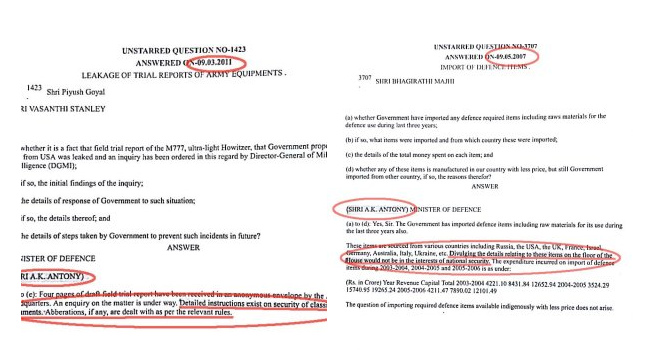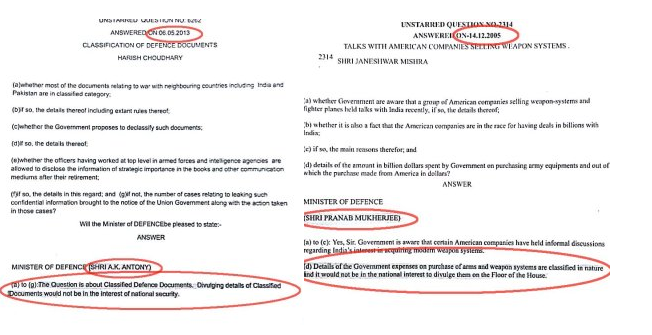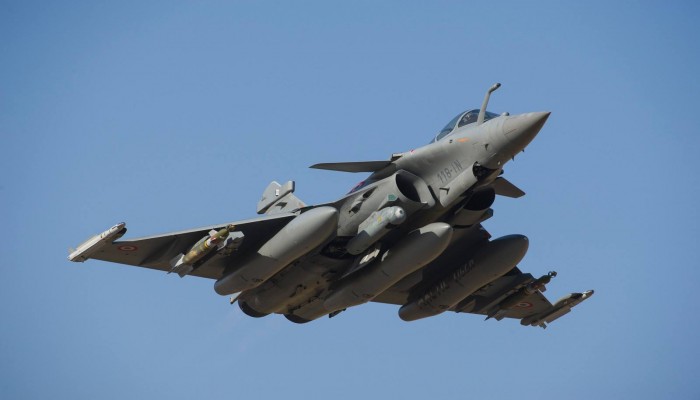Decoding The India-France G2G Rafale Deal- Why It Is Not A ‘Scam’
- In Military & Strategic Affairs
- 11:01 AM, Feb 17, 2018
- Shwetank Bhushan
The failure of communications on the part of the Modi government aside, it is astonishing that opposition parties led by Congress President Rahul Gandhi and their vile media cronies are severely indulging in mudslinging the government for a contrived Rafale-‘scam’.
Unfounded allegations are being made regarding the procurement of 36 Rafale aircraft in fly-away condition from France. This would typically not have merited a response but for having the potential of severe damage to the national security by repeatedly perpetrating the misleading, irresponsible statements.
Let us examine the validity of each such claim by understanding the procedure and also breaking down the deal, claim by claim.
1. Doubting the Procedural Malfunctioning:
Since 2002, the procurement of all major equipment, weapon systems, and platforms has been governed by the Defense Procurement Procedure (DPP).
In 2013 DPP, the UPA government enacted Articles dealing with Inter-Governmental Agreements (IGA). The DPP does envisage situations where it allows procurement under IGAs from “friendly foreign countries which may be necessitated due to geo-strategic advantages that are likely to accrue to our country” and recognizes the fact that such procurements do not strictly follow the standard procurement procedure.
The procurement, based on these IGAs, do NOT require (Cabinet Committee on Security) CCS clearance, just the clearance of a Competent Financial Authority (CFA), the CCS in this case.
The claim is that no ministry or Cabinet body was consulted before Prime Minister Narendra Modi committed India to the Rafale purchase on 10th April 2015. The fact is that the CCS takes decisions concerning all such acquisitions on the recommendations of the Ministry of Defense (MoD).
The deal is in accordance with the DPP in all aspects including mandating, conducting and monitoring of negotiations and seeking all necessary approvals, including that of the CCS, before entering into the IGA.
2. Price-Specification Details:
The opposition’s next demand with the GOI is that the “India-Specific-Upgrades” to the fighter jets, be also made public. Now, this is not only unrealistic but utterly foolish. Either they are trying to fool the people or making a fool of themselves.
These details would also come under the ambit of the Article 10 of the bilateral India-France Security Agreement of 2008 signed by the UPA Government. Also, it is difficult to recall any such instance of the granular details of the price breakup ever being disclosed.
In keeping with confidentiality requirements, the UPA Government had also expressed its inability to divulge commercial aspects of defense deals, disclose the price of various defense procurements in its responses to Parliament Questions stating, “Divulging details in this regard on the floor of the house would not be in the interest of national security.”
Examples:


Why play
cheap politics now?
3. Why no reconsideration of Eurofighter?
In another effort to twist facts, the Government is asked by Congress President, why it did not conduct negotiations with a Eurofighter representing a competing fighter aircraft. It seems to have been conveniently forgotten that the then UPA Government itself had rejected Eurofighter’s unsolicited offer made days after the closure of the bid process, and declared Rafale (DA) as the L1 bidder and had commenced negotiations with it in February 2012.
4. Why 36 and not 126?
What was the need to discard negotiations for 126 Rafale aircraft from DA, out of which 108 were to be made in India and to opt for the outright purchase of 36 aircraft from the same company?
The DA’s aircraft was selected after a long and unblemished process of evaluations and trials by IAF during 2009-10. The price negotiations for the acquisition of 126 aircraft started in 2012 that ran into a stalemate till 2014.
The squadron strength of the IAF kept depleting, with no immediate prospect of new acquisitions. We have hostile neighbors; hence we needed the aircraft and quick. Given this perspective, it was perhaps a pragmatic decision to call off the negotiations.
5. Exorbitant Price?
The comparisons between the per unit price at which the NDA Government has signed the contract in 2016 and the per unit price at which the UPA government was negotiating the deal for 126 aircraft, are not at all tenable. Another reason why it cannot be directly compared is that the deliverables in the two cases are entirely divergent.
The fact is that the approximate acquisition cost of the Rafale aircraft has already been provided to the Parliament. The total Rafale Deal Value is Euro 7.88 Bn (Approx Rs. 59,630 Crores), and here is the deal breakdown:
Unit Cost: Euro 91.7 Mn (Approx Rs. 688.30 Crores) Per Aircraft x 36 = Euro 3.30 Bn
Weapons including SCALP ALCM (Air Launched Cruise Missiles) and METEOR BVRAAM (Beyond Visual Range Air to Air Missiles) – Approx Euro 710 Mn
Performance-Based Logistics Support – Approx Euro 350 Mn
India Specific Enhancement (ISE) – Approx Euro 1.7 Bn
Infrastructure (Creating world-class BASE level, maintenance operations, state of the art climate controlled hardened air shelters, maintenance support setups at both bases for both aircraft) – Approx Euro 1.8 Bn
These costs are one off and will not be incurred for any future batches. It also includes AMC of simulators for ten years and training of IAF pilots and engineers.
The most significant drawback of the present Rafale deal is small ordering quantity; 36 against a total requirement of 189 units (126 + 63 units follow-on clause). It can be addressed by additional follow-on orders that, without any doubt, would benefit immensely from these new conditions.
The 2016 deal is for highly advanced versions of the Rafale (F3+), highly customized to operate in Indian conditions, compared to the original MMRCA was for the F2 version minus any Indian specific upgrades.
In the earlier proposal of the UPA Govt., which ended in a stalemate, there was no provision for transfer of technology but only to manufacture under license. Another point of departure from the original deal is that the NDA’s Rafale deal includes 50% offsets as opposed to earlier 30%.
Furthermore, the NDA Rafale deal includes a comprehensive Performance Based Logistics (PBL) agreement wherein DA is legally obligated to assure that 75% of the IAF’s Rafale fleet is available for operations at any given moment in time. For comparison, in 2015 the IAF’s SU-30MKI fighter fleet had an availability rate of less than 50%.
It is true that in the absence of a system of proactive disclosure of the defense deals have not helped matters and the procedural requirement is only to assess the reasonableness of the price quoted by the vendor.
However, to form a definitive opinion about whether or not the price, in this case, is reasonable, it is essential to see how it compares with prices offered to other buyers.
Qatar – The Rafale purchase price per unit including weapons, infrastructure, and training, but without country-specific enhancements. – Euro 262.5 Mn.
Eqypt – In a similar deal for purchase of 24 Rafale fighter jets Egypt had to shell out 5.2 Bn Euros. Unit Price – Euro 216.7 Mn.
Even if we include the one-off costs in case of India, the per unit cost comes to Euro 218.8 Mn. So, where is the price mismatch?
6. Why Reliance and not HAL?
So, does it finally boils down to the selection of Anil Ambani’s Reliance Defense (DRAL) as the Indian Offset Partner (IOP) by Dassault?
First, why not state-owned Hindustan Aeronautics Limited (HAL)?
In 2011 the US Ambassador had flagged the acute disrepair in HAL including lying & pilferage. The potential for HAL to successfully partner with US firms on a truly advanced aircraft remains untested and suspect,” US Ambassador, Timothy Roemer. Dassault has also been concerned over HAL’s capabilities.
It’s not the NDA government that refused HAL rather DA was reluctant for not being convinced about manufacturing ability of HAL and therefore unwilling to take the liability of the jet made by HAL.
Despite that at least till 2015, the NDA government tried to get DA to accept liability for the HAL manufacturing.
Now let’s look at the claim of Modi government favoring the Ambanis.
We do not know if Dassault intends to discharge the entire obligation only through DRAL. The offset contract is between the MoD and the vendor DA, and the MoD has no role in the selection of the IOP by the vendor.
Under the contract, DA and its Tier-I/II companies have to discharge an offset obligation of nearly Rs 30,000 crore. They need able IOPs who can fulfill this mammoth obligation.
Considering that the vendor carries the full responsibility for discharging the offset obligation, it would be odd to believe that Dassault would choose an IOP who cannot deliver. It will expose DA to the risk of defaulting on its offset obligation that entails penalties and much more.
Conclusion:
Though, I have no doubts that the situation could have been handled better. The fact is Congress party, and its mouthpieces in media are raising questions based on prejudiced perceptions rather than the hard facts.
Price wise the NDA Rafale deal is not only unquestionably reasonable but far superior to the earlier UPA estimation. If one looks into the 2016 agreement in its entirety, it can be firmly reiterated that the deal secured by the Modi Government is better in terms of capability, price, equipment, delivery, maintenance, training, and everything than what was notionally negotiated by the UPA Government in a process it could not conclude in ten years.
Instead of admiration and applause for the attempts to modernize the armed forces, these nefarious campaigns based on unfounded allegations, crafted assumptions and labeling it a “scam,” especially in such delicate defense procurement, have both real and very damaging effect.
Sources:
Everything You Wanted To Know About The Rafale Deal But Didn’t Know Where To Ask
Ministry of Defence: 07 FEB 2018 5:28PM by PIB Delhi
IAF pitches for 36 more Rafale fighters after it gets the first 36 from France – Times of India
Qatar, France Complete Dassault Rafale Fighter Jet Deal
All you need to know about Rs 59,000 crore Rafale deal between India and France
SO WHERE IS THE SCAM? The reality of the NDA’s (now) controversial 2016 Rafale deal
An Examination of the Rafale Case: The Old Non-Deal and the New Deal
Image Credits: https://www.facebook.com/RafaleFighterJet/photos/a.224731960888660.73322.224731894222000/930502630311586/?type=1&theater







Comments